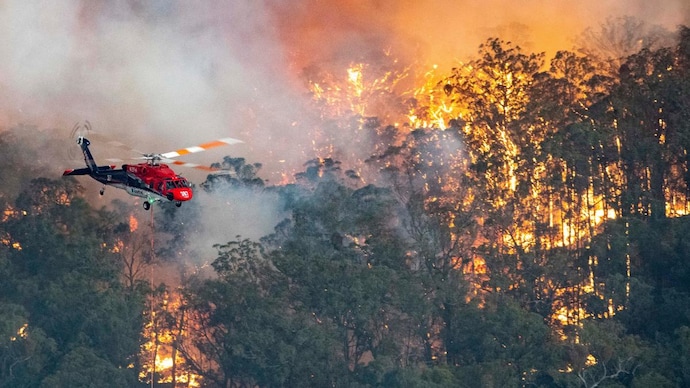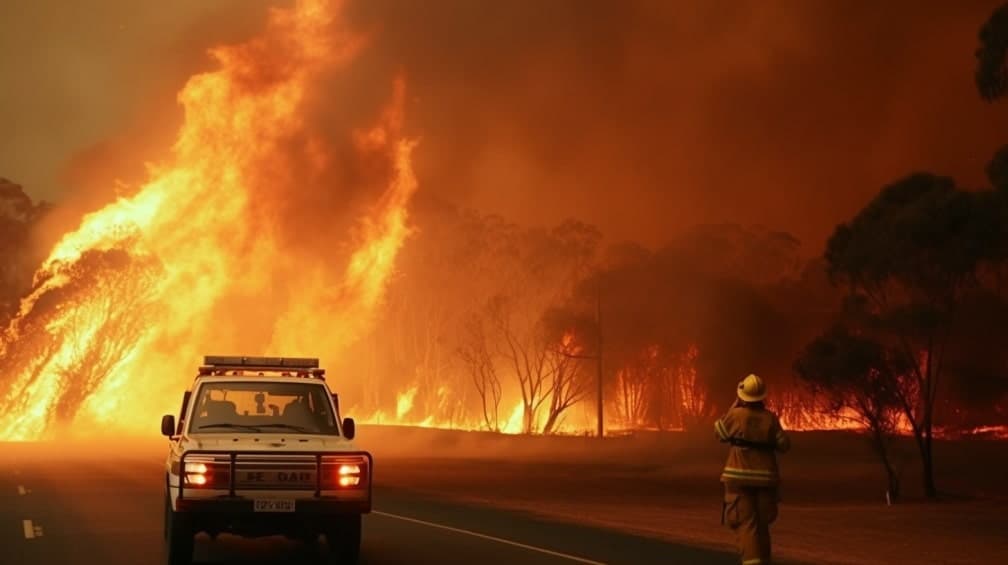Ideal Practices in Bushfire Management for Comprehensive Fire Security
In the world of bushfire administration, the quest for thorough fire security demands a thorough technique that encompasses numerous important elements. As we navigate through the subtleties of these finest methods, an exploration right into the detailed internet of approaches and approaches awaits, assuring a deeper understanding of the complex landscape of bushfire administration for thorough fire security.
Threat Evaluation and Preparation
In bushfire administration for fire security, the preliminary action involves conducting a comprehensive threat assessment and establishing a thorough plan to alleviate possible risks. Danger analysis is an important procedure that involves determining, analyzing, and assessing possible risks that might bring about a bushfire. This assessment takes into consideration various variables such as weather problems, topography, fuel load, and human tasks in the area. By comprehending these dangers, fire defense authorities can prioritize areas that are most prone to bushfires and allot resources successfully.
Adhering to the threat analysis, the following critical action is to establish a thorough plan to attend to the determined threats. This strategy ought to detail methods for avoidance, readiness, response, and healing in case of a bushfire. It ought to also include measures for area engagement, evacuation, and interaction treatments. By having a well-defined plan in position, emergency services can act promptly and successfully to protect lives, residential or commercial property, and the atmosphere throughout a bushfire outbreak. Effective danger assessment and planning are fundamental components of bushfire administration for guaranteeing extensive fire security.
Vegetation Monitoring Approaches
After performing a comprehensive danger analysis and developing a detailed strategy for bushfire management, the emphasis changes to carrying out reliable vegetation management methods. Plant life management plays an essential duty in lowering the strength and spread of bushfires.
Along with developing defensible space, prescribed burning is one more essential plants monitoring approach. Suggested burns entail deliberately setting fires under controlled problems to reduce the build-up of fuel, decrease the possibility of high-intensity wildfires, and promote environment health and wellness. By tactically melting areas with excess plants, fuel levels are lowered, making it harder for fires to spread quickly and uncontrollably.

Area Engagement and Education
Reliable community interaction and education and learning are important parts in developing a resilient and proactive strategy to bushfire monitoring. By involving area members in the planning and implementation of bushfire monitoring techniques, stakeholders end up being energetic participants in guarding their communities and homes. Area engagement promotes a feeling of shared responsibility and empowers locals to take possession of their safety.
Education and learning plays a vital duty in equipping people with the knowledge and skills required to reduce bushfire dangers properly. Offering academic resources on fire prevention, emptying procedures, and the importance of early detection can substantially improve community readiness. In addition, informing residents on the neighborhood bushfire environment, consisting of fire habits and risk variables, enables them to make enlightened choices during risky circumstances.
Through ongoing involvement and education initiatives, communities can create a cumulative understanding of bushfire threats and work collaboratively to decrease the impact of wildfires. By promoting a society of preparedness and strength, neighborhood participants can improve their capacity to react efficiently to bushfire emergency situations and protect both lives and residential or commercial property.

Very Early Discovery and Warning Solutions
Area engagement and education and learning work as fundamental pillars in developing positive bushfire management methods, preparing for the execution of robust very early detection and caution systems. Early detection and warning systems are crucial elements in mitigating the influence of bushfires on neighborhoods and the environment. These systems incorporate a variety of technologies and approaches intended at determining and notifying authorities and citizens to prospective fire episodes swiftly and efficiently.
One secret component of early detection systems is the usage of advanced tracking modern technologies such as satellite imagery, drones, and weather condition terminals to spot indicators of potential fire ignition. These innovations supply real-time information that can be evaluated to recognize fire-prone areas and cause early cautions. In addition, the integration of community-based tracking networks and automated sharp systems can boost the effectiveness of early discovery initiatives by involving locals in reporting possible fire hazards and getting prompt warnings.
Efficient very early discovery and caution systems depend on a multi-faceted technique that incorporates technological innovation, neighborhood involvement, and swift emergency reaction procedures to make certain the timely and collaborated administration of bushfire occurrences. By investing in these systems and fostering cooperation between stakeholders, areas can enhance check these guys out their durability to bushfires and lessen the connected threats.
Emergency Response and Evacuation Strategies
A well-coordinated and thorough emergency reaction and emptying plan is vital for efficiently safeguarding lives and home during bushfire events. These plans need to be thoroughly crafted, taking right into account aspects such as the topography of the area, the thickness of plants, and the prospective speed and instructions of the fire's spread.
One vital element of an emergency action plan is the establishment of clear communication networks to distribute exact and prompt info to homeowners and emergency -responders. This can include making use of sirens, mobile alerts, social media sites, and neighborhood conferences to make sure that everyone is educated and understands what actions to take.
Emptying routes must be pre-identified and regularly maintained to guarantee they come throughout emergencies. In addition, assigned evacuation centers need to be developed to provide shelter, clinical support, and assistance services to evacuees.
Regular drills and workouts are essential to familiarize residents with discharge procedures and check the effectiveness of the strategy. By continuously assessing and updating emergency situation response and emptying strategies, communities anchor can boost their readiness and strength in the face of bushfire dangers.
Verdict
In final thought, effective bushfire monitoring calls for a comprehensive method that includes danger evaluation, plants monitoring, area involvement, very early discovery systems, and emergency situation action strategies. By applying these ideal techniques, areas can much better secure themselves from the damaging impacts of bushfires - BAL Report. It is vital to prioritize proactive measures to mitigate the risks posed by bushfires and ensure the safety and health of people and areas at threat
After performing a thorough risk assessment and developing a comprehensive strategy for bushfire monitoring, the focus moves to executing effective vegetation management approaches.Reliable neighborhood interaction and education are vital elements in building a resilient and proactive strategy to bushfire management. By entailing neighborhood participants in the planning and execution of bushfire administration approaches, stakeholders end up being active participants in protecting their click here to find out more areas and homes.Community involvement and education serve as fundamental columns in establishing positive bushfire management methods, laying the foundation for the application of durable early discovery and caution systems.In conclusion, reliable bushfire management needs a comprehensive technique that includes danger analysis, vegetation administration, area engagement, very early detection systems, and emergency situation feedback plans.